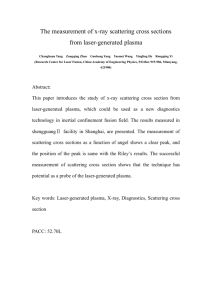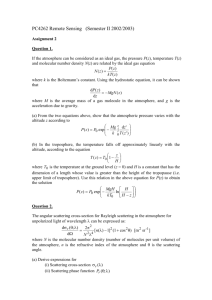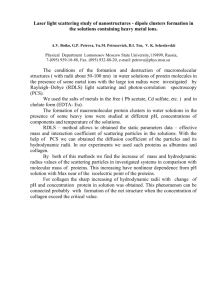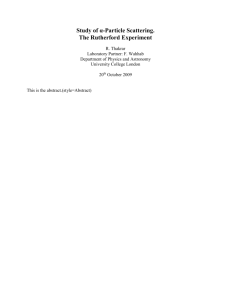Laboratory Study of Light Scattering by Rough Surfaces
advertisement
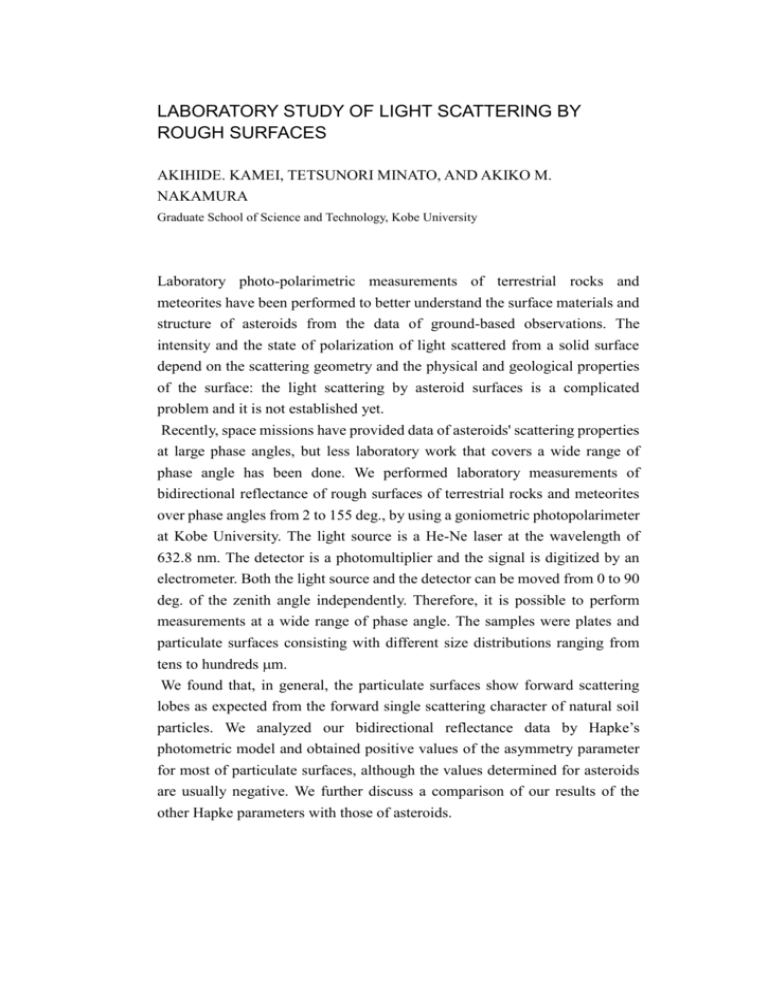
LABORATORY STUDY OF LIGHT SCATTERING BY ROUGH SURFACES AKIHIDE. KAMEI, TETSUNORI MINATO, AND AKIKO M. NAKAMURA Graduate School of Science and Technology, Kobe University Laboratory photo-polarimetric measurements of terrestrial rocks and meteorites have been performed to better understand the surface materials and structure of asteroids from the data of ground-based observations. The intensity and the state of polarization of light scattered from a solid surface depend on the scattering geometry and the physical and geological properties of the surface: the light scattering by asteroid surfaces is a complicated problem and it is not established yet. Recently, space missions have provided data of asteroids' scattering properties at large phase angles, but less laboratory work that covers a wide range of phase angle has been done. We performed laboratory measurements of bidirectional reflectance of rough surfaces of terrestrial rocks and meteorites over phase angles from 2 to 155 deg., by using a goniometric photopolarimeter at Kobe University. The light source is a He-Ne laser at the wavelength of 632.8 nm. The detector is a photomultiplier and the signal is digitized by an electrometer. Both the light source and the detector can be moved from 0 to 90 deg. of the zenith angle independently. Therefore, it is possible to perform measurements at a wide range of phase angle. The samples were plates and particulate surfaces consisting with different size distributions ranging from tens to hundreds m. We found that, in general, the particulate surfaces show forward scattering lobes as expected from the forward single scattering character of natural soil particles. We analyzed our bidirectional reflectance data by Hapke’s photometric model and obtained positive values of the asymmetry parameter for most of particulate surfaces, although the values determined for asteroids are usually negative. We further discuss a comparison of our results of the other Hapke parameters with those of asteroids.







